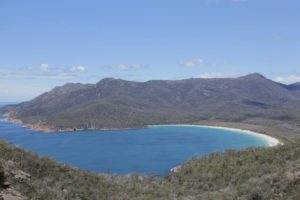After receiving emails and messages from family, friends and readers asking if I’m ok and safe from the bad fires in

Australia making news internationally, I thought I would update you all on the latest on the fires.
I am happy to report, I’m safe, in good health and far away from the fires making news. Melbourne, where I live, has experienced some of the heat wave hitting Australia but luckily no fires. The state of Victoria, where Melbourne is located, has only seen small fires, which crews quickly and efficiently extinguished. New South Wales in the Southeast has also seen a number of fires, though that is pretty standard for this time of year in that part of Australia. The bad fires bringing destruction and loss of life have occurred in beautiful , and usually very temperate, Tasmania.
Tasmania, located just off the coast of Victoria, is normally a rainy, cool island. Rarely seeing extreme heatwaves, the area does not experience the yearly fires the rest of Australia works through each summer. Tasmania, with it’s much cooler temperatures and year round rain, hasn’t had a bad fire in a number of years.

Ever since the 10 year drought (which ended two years ago), summer fires are a normal occurrence across mainland Australia. Auzzies have come to expect yearly fires. People here are both terribly saddened by the fires in Tasmania and also realistic that fires are a part of life in this area of the world. There’s no sense of shock or surprise, rather a “let’s beat this thing and keep folks safe” attitude that comes from dealing with bad fires year after year. In typical Australian-style, the different forest fire departments, emergency services agencies, and Australian communities come together every summer to help each area battle fires that arise. Fire crews from across Australia and New Zealand have travel to Tasmania to help battle the blazes.
Officials are siting heat, less rain than usual, and a large amount of brush in the forest and on people’s land as the main problem which created the perfect conditions for a wide-spread fire to quickly burn. Also, Tasmania’s farmlands are more heavily vegetated than in other part’s of Australia, providing plenty of fuel for the fires that began.
The Australian News reported that “Tasmania is different from other states in that so many farmers have hills, forest and bush on their properties and about 80 per cent of the land affected by the ferocious southern Tasmanian bushfire of the past week was private land or farms, not crown reserve or state forest.”
Currently, officials are reporting that most of the fires were started by lightning strikes, strong winds spreading the fires even quicker. As the fires burn, people are debating whether back-burning would have stopped many of the fires — saving homes and lives. Back-burning is a system where a new fire is lit and burned under controlled conditions right in front of an existing fire. The intent is to deprive the approaching fire of any more forest fuel so when it reaches the patch of burned earth it won’t have any more vegetation to burn and thus burn out. Back-burning is a hotly debated topic with environmentalists not wanting to see any of the land burned, while farmers believing it’s a useful tactic to prevent and stop fires.
Many fires still burn across Tasmania, most are now under control. Cooler temperatures this week will help firefighters hopefully extinguish the rest of the fires.


